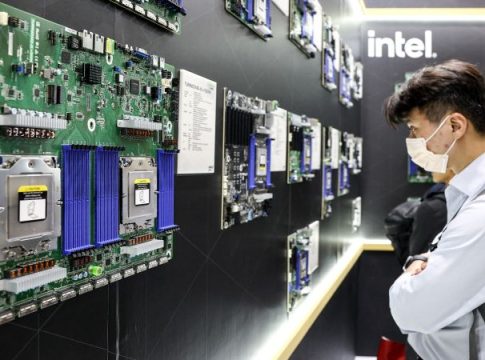TSMC’s Landmark Investment: A Catalyst for AI and Semiconductor Innovation
In a move that is set to reshape the semiconductor landscape, Taiwan Semiconductor Manufacturing Company (TSMC) has announced a staggering $100 billion investment—the largest single foreign investment in U.S. history. This initiative not only highlights TSMC’s pivotal role in the global semiconductor supply chain but also raises questions about Taiwan’s position and stability amid ongoing geopolitical tensions.
Building the Future in Arizona
TSMC’s investment will primarily focus on developing two advanced packaging facilities in Arizona. This decision stems from the skyrocketing demand for advanced semiconductor technologies, particularly as artificial intelligence (AI) applications continue to proliferate across industries—from smartphones to powerful AI solutions. The facilities aim to enhance production capabilities of the increasingly vital advanced packaging technologies.
What is Advanced Packaging?
In semiconductor manufacturing, packaging refers to the process of encasing chips for protection and integration into devices. Advanced packaging, however, elevates this process by allowing multiple chips—like graphic processing units (GPUs) and memory modules—to be positioned closer together, thereby optimizing performance and reducing power consumption. This innovation is crucial in today’s tech landscape, especially when it comes to meeting the needs of complex AI computations.
Analogy: Think of advanced packaging like organizing office spaces within a company. Keeping departments close enables quicker communication and streamlined workflows, ultimately enhancing overall efficiency.
The CoWoS Advantage: Revolutionizing AI Applications
One of the standout techniques in advanced packaging is Chips-on-Wafer-on-Substrate (CoWoS), originally pioneered by TSMC. This method effectively enables the creation of powerful AI chips, which are essential for running data centers and AI servers. Industry leaders such as Nvidia and AMD have embraced CoWoS for its efficiency and capabilities, making it a cornerstone for contemporary AI processing.
A Rising Demand
As the AI sector expands rapidly, the demand for CoWoS technology has surged. Jensen Huang, CEO of Nvidia, emphasized its importance, noting that the capacity for advanced packaging has quadrupled in just two years. This burgeoning interest has prompted TSMC to proactively increase production levels to meet market expectations.
Strengthening the U.S. Semiconductor Ecosystem
With both advanced manufacturing and packaging now being developed in Arizona, this consolidation positions the U.S. as a “one-stop shop” for semiconductor needs. Analysts argue that this will not only enhance the competitiveness of American companies like Apple and Qualcomm but also mitigate supply chain risks that arise from global dependencies.
Historic Context: The CoWoS technology, although first developed over a decade ago, has only recently gained traction due to the AI boom. This illustrates how fast-paced technological evolution can reshape industry dynamics overnight.
Conclusion: A New Era of Semiconductor Innovation
TSMC’s significant investment and focus on advanced packaging technologies mark a watershed moment in the semiconductor industry. As nations strive for dominance in AI capabilities, having robust manufacturing and packaging facilities domestically is likely to redefine competitive landscapes while fostering innovation.
In a world increasingly reliant on AI, understanding these underlying technologies is crucial for both businesses and consumers. The implications of TSMC’s advancements extend far beyond chips; they hold the potential to influence the very fabric of technological progress in the coming years.

Writes about personal finance, side hustles, gadgets, and tech innovation.
Bio: Priya specializes in making complex financial and tech topics easy to digest, with experience in fintech and consumer reviews.

